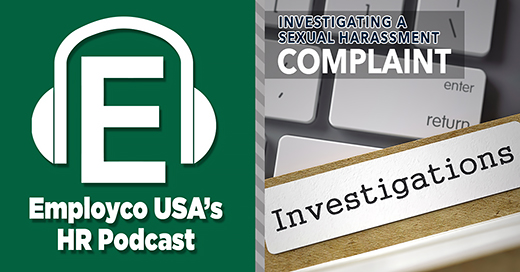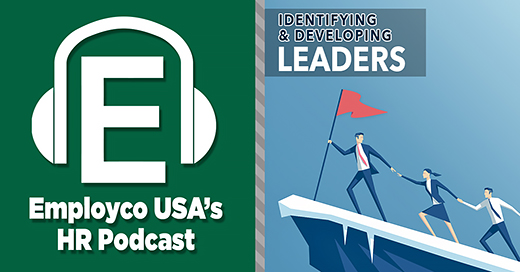Human resources expert explains how companies can create safe, equitable workplaces in the #MeToo era
 A WeWork employee recently came forward to state that she was fired after reporting rampant sexual harassment in her workplace. In her lawsuit, it is alleged that the $20B co-working company spent more on parties than on sexual harassment training, and that a ‘frat-boy culture’ permeated the offices.
A WeWork employee recently came forward to state that she was fired after reporting rampant sexual harassment in her workplace. In her lawsuit, it is alleged that the $20B co-working company spent more on parties than on sexual harassment training, and that a ‘frat-boy culture’ permeated the offices.
“It is clear that sexual harassment on the job is a serious issue that many workplaces are not adequately addressing,” says Rob Wilson, President of Employco USA and human resources expert. “In my line of work, I have seen firsthand how companies can make severe missteps when trying to handle sexual harassment claims on their own.”
Employco helps companies to investigate claims of workplace harassment, whether it is a case of quid pro quo or hostile work environments. Wilson says that there are many things employers and managers must consider when investigating a sexual harassment complaint, including:
- Act quickly. “Don’t delay,” says Wilson. “Waiting can send a bad signal to the victim that what happened to them is not important in the eyes of their employer. Not to mention, as time goes on, the victim, witnesses, and the alleged harasser will be more likely to forget details, and if harassment is found to have occurred, the harasser needs to be disciplined as quickly as possible.”
- Determine who will do the investigation. “If you are a small or medium-sized company, I would recommend that you consider outsourcing your investigation. Why? Because it is crucial that your investigator has no ties to either the victim or perpetrator,” says Wilson. “This likely won’t be possible if you are an office of 20 people. Yes, it will be a cost that you may not wish to pay upfront, but it’s better than being sued down the road because you mishandled something as serious as a sexual harassment claim.”
- Keep gender in mind. “Is the accusation coming from a woman? Then, hire a female investigator. Is the accuser a man? Then, hire a male investigator,” says Wilson. “When talking about intimate and sometimes-embarrassing situations, the victims will feel more comfortable speaking to someone of their same gender. It’s easy to understand why a woman may not feel comfortable opening up to a strange man about how she was sexually assaulted at the office Christmas party. Do whatever you can to make your employees, especially those who have been victimized by the scourge of sexual assault and harassment, feel safe coming forward and telling their story.”
- Investigate thoroughly. “Interview all possible witnesses. Review security footage. Examine data from work computers and other devices. Perhaps the accuser sent lewd messages via email or text. Gather and save all of this data, and contact the police if you believe a crime has been committed (for instance, if an employee shares intimate photos of another employee without their consent, this could be considered a crime, depending on the state where you live).”
- Thank your employee for coming forward. “Regardless of what happens as a result of the investigation, make sure that your employee knows how grateful you are that they came forward. Ensure that they feel safe in the workplace and that they are not being threatened or mocked by other employees. Their safety should be of the uttermost importance.”
- Never transfer the victim. “Unless they come to you and ask to be moved to a new department, never move the victim. Always transfer the person who is accused of the harassment. If the victim does wish to move, make sure to get this in writing so you have proof that it was their idea and not a punishment or attempt at obfuscation coming from upper management.”
For more on this topic, please contact Rob Wilson at rwilson@thewilsoncompanies.com.

 More than
More than  Research has shown that the American commute keeps getting longer and longer, with the average worker
Research has shown that the American commute keeps getting longer and longer, with the average worker  The Senate could vote this week on a bill which would take apart a good deal of President Obama’s Affordable Care Act, including a key piece of legislation which required employers to offer health insurance to all employees who work 30 hours or more per week.
The Senate could vote this week on a bill which would take apart a good deal of President Obama’s Affordable Care Act, including a key piece of legislation which required employers to offer health insurance to all employees who work 30 hours or more per week. “Shark Tank” star and billionaire Mark Cuban is in hot water after accounts of sexual harassment and violence within the Dallas Mavericks came to light in recent weeks. Although Cuban has faced the charges head on, even going so far as to pledge $10M to domestic violence charities, some question whether Cuban can recover…or, if the Dallas Mavericks’ workplace will ever truly be safe for women.
“Shark Tank” star and billionaire Mark Cuban is in hot water after accounts of sexual harassment and violence within the Dallas Mavericks came to light in recent weeks. Although Cuban has faced the charges head on, even going so far as to pledge $10M to domestic violence charities, some question whether Cuban can recover…or, if the Dallas Mavericks’ workplace will ever truly be safe for women. A
A 
 As the economy strengthens and jobs’ numbers improve, employees now have more options and bargaining power than in recent memory. However,
As the economy strengthens and jobs’ numbers improve, employees now have more options and bargaining power than in recent memory. However,  A
A